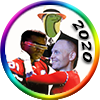Some stuff on the new X1 controller:
http://www.computerandvideogames.com...ve-controller/
During the press conference we admit this sounded like complete marketing guff, especially when combined with the phrase "dynamic impulse triggers". But in truth when we tried this particular feature for ourselves we found it to be one of the most exciting aspects of Xbox One from a gamer's point of view.
Essentially, Microsoft has increased the number of force feedback motors in the Xbox One controller, allowing for more subtle rumble in localised parts of the pad. In one FPS-style demo we played, a virtual hand held out a pistol. Firing the pistol with the controller's right trigger resulted in simulated recoil occurring on just that part of the controller.
In another demo, which had the same virtual hand magically spawn a fire ball, we could 'feel' the explosive projectile explode from the centre of the controller and out towards your fingers. It was an impressive effect.
Other demos better showed off the feature's application as a gameplay enhancement. One allowed us to start the engine of a supercar with the Y button, causing the Xbox One controller to cough and splutter realistically as the virtual engine sparked to life.
In another section showing a close up of the vehicle's wheels, the controller pulsed to simulated bumps in the road surface, and then violently clanged as the anti-lock breaks kicked in.
Finally, a simple demo featuring a human figure caused the controller to simulate a heartbeat, directly on the corresponding spot of the pad on the top right hand corner. It's been suggested the subtlety of Xbox One's force feedback could be used to find secrets of even indicate the direction of enemy fire in next-gen games.
Every journalist we spoke to at Microsoft's Redmond event agreed; the Xbox One controller feels like a big improvement over its 360 predecessor.
In comfort, the pad's handles feel more angular and better defined, screw holes and seam lines have been removed and the 360's bulky battery pack has been rotated 90 degrees and absorbed inside the controller. The latter means the Xbox One pad feels lighter, with weight better distributed across the peripheral.
From a functionality perspective, fans will be pleased to hear that the much-criticised d-pad of the current console has been redesigned and now feels tighter and more accurate with buttons presses rewarded with a satisfying click. The analogue sticks too have had their dead zones minimised significantly, says Microsoft.







